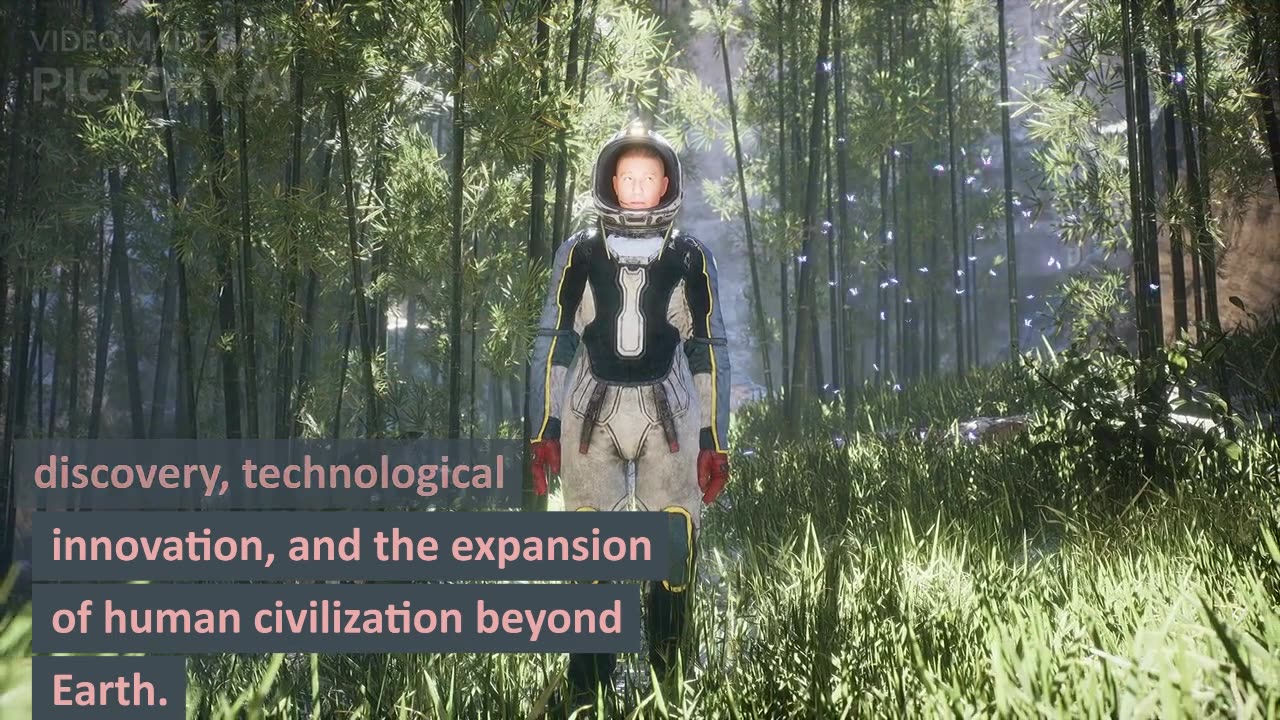Premium Only Content

"Life on the Moon: A New Frontier of Possibilities"
Introduction:
The concept of living on the Moon has captivated human imagination for decades. As we venture into the future with advancements in space exploration and technology, the idea of establishing a human presence on the Moon becomes increasingly plausible. This article explores the potential scenarios, challenges, and benefits of living on the Moon.
1. Lunar Habitats:
Creating habitable structures on the Moon presents unique challenges due to its harsh environment, including extreme temperature variations, lack of atmosphere, and high levels of radiation. However, scientists and engineers have proposed innovative solutions such as underground habitats to shield residents from these hazards. These habitats could be equipped with life support systems, radiation protection, and advanced recycling systems to ensure a sustainable living environment.
2. Self-Sufficiency and Resource Utilization:
To sustain life on the Moon, self-sufficiency is crucial. One approach is to utilize local resources, such as lunar regolith (moon dust) and water ice found in permanently shadowed craters. These resources could be transformed into building materials, oxygen, water, and even rocket propellant, reducing the need to transport everything from Earth. This would drastically cut costs and make long-term lunar habitation more feasible.
3. Scientific Research:
Living on the Moon would offer scientists an unprecedented opportunity to conduct research in a unique environment. The Moon's geology, its interaction with the solar wind, and its potential insights into the early history of the solar system make it a valuable scientific laboratory. Astronomical observations from the Moon's surface, unobstructed by Earth's atmosphere, could also provide new insights into the universe.
4. Lunar Economy and Industry:
Establishing a human presence on the Moon could lead to the development of a lunar economy. Mining lunar resources for use in space (such as water ice for rocket propellant) or precious materials (such as rare metals) could become lucrative endeavors. Additionally, the Moon's low gravity could serve as a platform for assembling and launching spacecraft, making it a potential hub for further space exploration.
5. Challenges and Risks:
Living on the Moon presents numerous challenges, ranging from the physical and psychological health of residents to logistical difficulties. Long-duration space travel can have detrimental effects on the human body, and lunar residents would need to adapt to the Moon's lower gravity, which could impact bone density and muscle strength. Moreover, the isolation and confinement of lunar living might lead to psychological challenges for inhabitants.
6. Environmental Impact:
While the Moon lacks a natural ecosystem, human activity could still have an impact on its environment. Careful consideration would be needed to ensure that any human presence on the Moon does not disrupt its delicate balance or create irreversible changes.
7. International Collaboration:
The endeavor of living on the Moon would likely require international collaboration on an unprecedented scale. Just as the International Space Station represents a cooperative effort among various countries, lunar living could foster partnerships that transcend geopolitical boundaries.
Conclusion:
Living on the Moon is not just a futuristic dream; it's a potential reality that humanity could achieve in the coming decades. While there are challenges to overcome, the prospect of establishing a permanent human presence on another celestial body holds immense promise for scientific discovery, technological innovation, and the expansion of human civilization beyond Earth. As we continue to explore and push the boundaries of space exploration, the Moon stands as a beckoning frontier, inviting us to take the next giant leap.
-
 LIVE
LIVE
Joker Effect
42 minutes agoInterviewing GREENMAN! Looks like he is coming to Rumble! Let's give him a warm welcome! REAL TALENT
413 watching -
 LIVE
LIVE
Anthony Rogers
7 hours agoEpisode 380 - Is Pain All In Your Head?
46 watching -
 1:46:17
1:46:17
Glenn Greenwald
5 hours agoGlenn Takes Your Questions on Censorship, Epstein, and More; DNC Rejects Embargo of Weapons to Israel with Journalist Dave Weigel | SYSTEM UPDATE #505
96K6 -
 LIVE
LIVE
Jokeuhl Gaming and Chat
6 hours agoHelldivers 2 - Spreading Democracy w/ Ryker
41 watching -
 27:47
27:47
Stephen Gardner
2 hours ago🚨BREAKING: Trump FURIOUS Over Kamala’s Latest Move – SHOCKING Details!
7.41K22 -
 8:00:13
8:00:13
Dr Disrespect
10 hours ago🔴LIVE - DR DISRESPECT - GEARS RELOADED GLOBAL LAUNCH - CRUSHING LOCUST
106K13 -
 LIVE
LIVE
Reolock
3 hours agoWoW Classic Hardcore | One level at a time
28 watching -
 LIVE
LIVE
Spartan
5 hours agoScrims vs FaZe then Ranked + Expedition 33
11 watching -
 57:00
57:00
BEK TV
23 hours agoOpen Range
5.73K1 -
 1:06:27
1:06:27
BonginoReport
4 hours agoBig Bad JB Threatens Trump! - Nightly Scroll w/ Hayley Caronia (Ep.120) - 08/26/2025
107K48